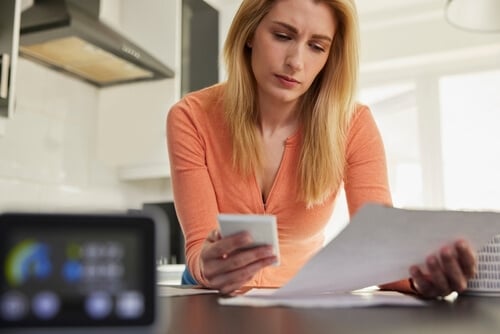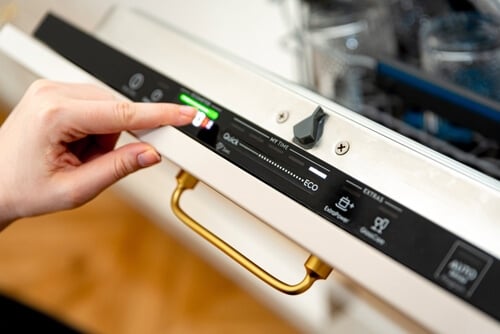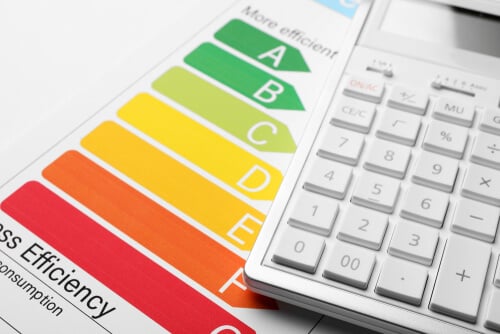What are green energy tariffs?
Green tariffs are environmentally friendly tariffs. When you sign up, your supplier commits to sourcing enough green energy to cover your consumption.
Suppliers buy renewable energy using a system known as REGO certificates. REGO stands for Renewable Energy Guarantees of Origin. Suppliers issue a certificate for each megawatt hour (MWh) of renewable electricity that’s produced.
You can purchase energy directly from the supplier’s own windfarms and other renewable energy plants. You can also be purchase it through third parties – including domestic customers with solar panels who sell their surplus electricity to the grid.
Even if your supplier produces renewable energy, it’s not delivered directly to your home. Instead, your supplier feeds the equivalent amount of green energy into the grid. This replaces the energy you and other customers use.
Most suppliers offer 100% renewable electricity, but some may offer tariffs that are a mix of renewable and non-renewable sources, such as fossil fuels. This should be clearly labelled on the tariff.
Green gas tariffs work in a similar way. A handful of suppliers offer tariffs that include some green gas, which is biogas generated from animal or vegetable waste. Other suppliers offer green gas tariffs that simply offset the emissions generated by the gas you use. This is often in the form of funding for international projects that aim to cut carbon emissions.
Another feature of green energy tariffs is what suppliers do with their profits. Many reinvest part or all of this in new renewable energy generation projects. This helps to meet future demand for renewable energy and help speed up the UK’s transition to net zero.
Compare gas and electricity suppliers to find our best deal in minutes




What are the different types of green energy?
There are 4 main sources of renewable and green energy, which the UK is well positioned to take advantage of. The main types are:
- Wind power: This is currently the UK’s biggest source of renewable energy. It provided 29.4% of all electricity generated in the UK in 2023.
- Biofuels: This involves the burning of renewable organic materials. Examples include food waste, wood and vegetable oil. Some is burned to produce electricity, while other fuels generate green gas (biogas) through anaerobic digestion. Biofuels generated 5% of all UK energy in 2023.
- Solar: Found on both household rooftops and in large areas of farmland. Solar power contributed to 4.9% of all UK power in 2023.
- Hydroelectric power: This is generated by both rivers and dammed lakes, as well as tidal power. It contributed to 1.8% of all UK energy in 2023.
When a certain energy type isn’t available (say solar at night), another can step up (wind power). Some types – tidal – can also produce power consistently on a 24-7 basis.
Other sources of energy include geothermal energy, which taps into superheated water and steam found in natural springs below the Earth’s surface.
One fuel type that isn’t green energy despite being low carbon is nuclear. This is because of the environmental side-effects. First, nuclear fuels are rare and require mining, which is ecologically damaging. And second, it produces waste that must be stored for thousands of years before it’s safe.
Frequently asked questions
Can I get green energy if I have a prepayment meter?
Yes. Many suppliers offer green tariffs for prepayment meters. However, there is less choice available. For the best prices and deals, see if you can move to a standard credit meter.
Can I use green energy to charge my electric vehicle?
Yes. If you fix solar panels to your roof or fit a wind turbine, you can use some of the electricity generated to charge your electric vehicle. Even a standard domestic system should generate enough power for both your home and car.
How can I generate my own green energy?
There are several ways you can generate your own renewable energy. The most popular is with solar PV panels, which are fixed to your roof. These generate electricity for your own use.
Surplus energy is fed back to the grid and you're paid a small premium for it.
Alternatively, you can fit batteries to store more of the energy generated for your own use to help cut your bills.Other less popular ways to generate your own energy include solar thermal (for heating water) and small wind turbines (often roof-mounted).





